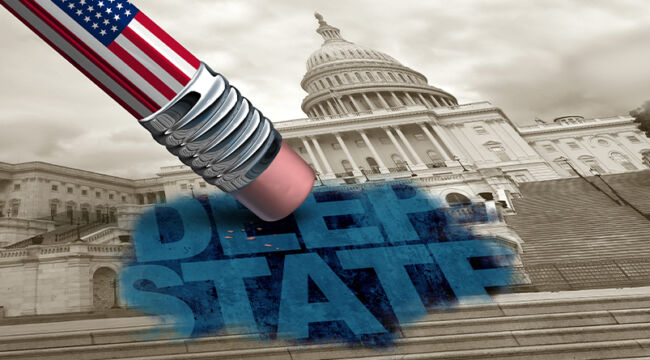by Jim Rickards, Daily Reckoning:

Let’s say that Trump wins the November election. What would a second Trump presidency actually look like?
Today we’re going to investigate that question. Let’s first back up to the 2016 election.
Trump ran the most incompetent presidential transition process in my lifetime and perhaps the worst in history. The problems began with the fact that none of Trump, his family members and inner circle actually thought he would win the 2016 election with the exception of campaign manager Steve Bannon.
TRUTH LIVES on at https://sgtreport.tv/
I predicted Trump would win but I was almost alone in that regard.
Trump picked Chris Christie as his transition manager, seemingly oblivious to the fact that as a prosecutor, Christie had put Jared Kushner’s father in jail. Given Kushner’s role as Trump’s son-in-law and close adviser, this was a recipe for failure.
A well-run transition doesn’t start the day after the election. It begins a year or more advance with a list of loyal appointees ready to go. Trump had no preparation and no team. Christie was fired as transition manager and Mike Pence took over, but the entire process was bungled.
The other problem was that Trump applied the New York real estate developer mentality to his administration. He never worried much about his appointees because if they failed, he could always yell, “You’re fired!”
That may work in New York, but it doesn’t work in Washington. Appointees are protected by politicians, lobbyists and the media. If you fire someone, you can expect a barrage of leaks, policy paralysis and opposition to any new appointee.
Even if a bad choice is fired, the lower levels of the deep state take over and run rings around you while waiting for a replacement who will take months to get a handle on the job in a best case.
Trump never understood any of this.
Trump also trusted the wrong people. He installed James Mattis as secretary of defense, Rex Tillerson as secretary of state, H.R. McMaster as national security adviser and John Kelly as chief of staff. They were all RINOs from the Bush wing of the party.
They were brought in as “adult supervision” of the supposedly reckless Trump, but they all stabbed Trump in the back. Meanwhile, loyal supporters like Steve Bannon and K.T. McFarland were shoved aside.
Trump didn’t learn. He did fire James Comey as head of the FBI (three months too late) but then appointed Christopher Wray as the new FBI director. Wray now works for Biden and puts Trump supporters in jail. But Trump was the one who appointed him.
Trump should have fired the lying Anthony Fauci after one meeting. Instead, he gave Fauci the keys to the U.S. economy. Fauci then implemented lockdowns, school closings, vaccine mandates, masking and social distancing in ways that ruined the U.S. economy and gave Trump’s enemies an excuse to change election laws to favor mail-in ballots, which permits more widespread cheating.
The list goes on. The bottom line is no one was worse at transition planning, appointments, endorsements and tolerance of gross incompetence than Trump. He was his own worst enemy and seemed incapable of learning the ropes in how to deal with Washington bureaucracy and the deep state.
This leaves one overriding question. Has Trump learned anything since leaving office in 2021? Will he have a successful transition this time or simply repeat the blunders of 2017–2021?
Read on to see how Trump could pull it off.
How to Take on the Deep State
By Jim Rickards
Has Trump learned anything since leaving office in 2021? Will he have a successful transition this time or simply repeat the blunders of 2017–2021? To answer those questions, we turn to two books that hold the key to possible success in a new Trump administration. The first is called The Plum Book. The second is called Mandate for Leadership 2025.
“Plum Book” is a nickname for a publication from the Government Printing Office based on the fact that it has a plum-colored cover. The official title is United States Government Policy and Supporting Positions.
It’s a 232-page directory of about 8,000 jobs in the U.S. government with an emphasis on the executive branch (controlled by the president) and independent agencies such as the Federal Communications Commission (FCC), the National Endowment for the Arts (NEA) and the Securities and Exchange Commission (SEC). It’s literally page after page of job listings by title, department and pay grade.
What makes the Plum Book special (and indispensable to a presidential transition team) is that the jobs listed in the book are those that are open to political appointment and not subject to a competitive process.
These are the jobs where the president can just pick the person he wants and install that person in a key policy position without going through normal civil service channels. Some of the positions may be subject to Senate confirmation, but that usually poses no difficulty, especially if the new president’s party also controls the Senate.
Read More @ DailyReckoning.com



